My favorite cinematographer currently is Hoyte van Hoytema. He is from Horgen, Switzerland and studied at the National Film School in Lodz, Poland after being denied from several other film schools.
Hoytema has mostly worked on films in Sweden, although he has also worked on films in Germany, Norway, the United Kingdom, and the United States. Some of his most notable U.S. films include, Her (2013), Interstellar (2014), Spectre (2015), and Dunkirk (2017). Some of Hoytema’s other films include, Let the Right One In (2008), The Girl (2009), Call Girl (2012), and Tinker Tailor Soldier Spy (2011).
Additionally, Hoytema has been nominated for and won several cinematography awards for these films. Hoytema has won the Guldbagge Award for Best Cinematography on three different film which include, Let the Right One in, The Girl, and Call Girl. As well, Hoytema won a Kodak Nordic Vison Award for Best Cinematography on Let the Right One In. Furthermore, Hoytema was nominated for several other awards. Including, the American Society of Cinematographers (ASC) Award for Outstanding Achievement in Cinematography on the film Tinker Tailor Soldier Spy. In addition to BAFTA’s Award for Best Cinematography for Tinker Tailor Soldier Spy and Interstellar. Lastly, Hoytema was nominated for a Satellite Award for Best Cinematography for his work on Interstellar.
Looking at Hoytema’s cinematography style we can recognize that he doesn’t have a specific cinematography technique or style to the films he is called on to, but rather completely approaches his cinematography through the scripts story and characters. However, Hoytema does tend to stay with a soft cinematic theme in most of the films he has worked on. Furthermore, Hoytema is very talented and experienced in his field. He has worked with nearly every camera created. This includes both film and digital; the Aaton Penelope (film), IMAX (film), Alexa and Red (digital), Arri, and Panavision. In addition, he has also worked with a variety of lenses as well. Such as, Arri, Cooke, Cannon, Zeiss, Angenieux, and Mamiya. Hoytema has also pictured films on both Fuji and Kodak film stock, on both 35mm and 65mm IMAX, and has shot in nearly every aspect ratio. Although, Hoytema says that his favorite is shooting on film at a focal length of 35mm, which is 50mm on DSLR full frame.
Since Hoytema tends to approach his films with a soft cinematic technique, we can recognize his lighting preferences. Hoytema generally likes to use a neutral-density (ND) filter, and adds color by using Plus Green, Minus Green, Color Temperature Orange (CTO) gel, and Color Temperature Blue (CTB) gel. When defusing light, he likes to use Light Grids or Full Grids, and when filming in studio he likes to use Translights, but has used Front Projection in some of his work. As well, when filming outside, Hoytema generally likes to bounce light using Ultrabounce, as well as using 18K Arrimax lights. Lastly, when lighting faces, Hoytema doesn’t go by a specific constant ratio and generally likes to light his subjects form the top, front, or side.
Looking closely at the cinematography of one of Hoytema’s films, Her, we can analyze how Hoytema uses light and the camera to effectively captivate and portray a unique love story. The film Her by Spike Jonze takes place in a futuristic Los Angeles and follows the life of Theodore Twombly. Theodore is a lonely, soulful man that writes letter for other people as a living. On his way home from work one day he sees an advertisement for a new artificial intelligent operation system, and decides to download it when he gets home. This operating system is very human like, having its own intuitive growth in which becomes its own entity, and over time Theodore and his operating system, Samantha, start to fall in love.

The vision for this film was to have a soulful, lonely cinematic feeling, in which was to reflect the personality of Theodore. The production designer on set, K.K. Barrett showed pictures taken by the Japanese photographer Rinko Kawuchi to Hoytema as the general aesthetics they wanted the film to be. Kawuchi’s photographs are very soft, calm, and fervent, and was exactly the mood they wanted to portray in this film. A very soft intimate, futuristic, tangible and cordial feeling, rather than the typical heavy dystopian feeling in futuristic films.
To achieve this, Hoytema and his team decided to go digital for the film, using an ARRI ALEXA. They decided to do this because of the leeway filming on digital would have, especially for the night scenes. “We didn’t want to do a lot of augmenting in post, and with the Alexa we could use extremely low-level light sources [for the interior] that were still controllable.”
You can definitely recognize this in the film. Using digital made each scene very precise and near perfect. They were very clear and ardent, which is important for effectively capturing and portraying Theodore’s feeling and loneliness. When we see Theodore sitting by himself in his huge apartment with a wide view of Los Angeles, through the cameras limpid and raw capture of Theodore we as the audience get a strong genuine sensation of loneliness. It feels real. However, if these scenes were shot on film, the night shots might not have come out as clear, raw, or natural, making it feel too harsh and dark; straying away from the soft intimate aesthetic theme of the film. Also since choosing the ARRI ALEXA, it’s lenses vary, allowing for very minimal lighting, also helping to create the ambiance of a soft, raw depiction in which helps the audience to connect more with the story and Theodore. Which is very important, because in a relationship were we only seen one person of the relationship, we need to feel intimacy in a new way and we need to feel realness more than ever.
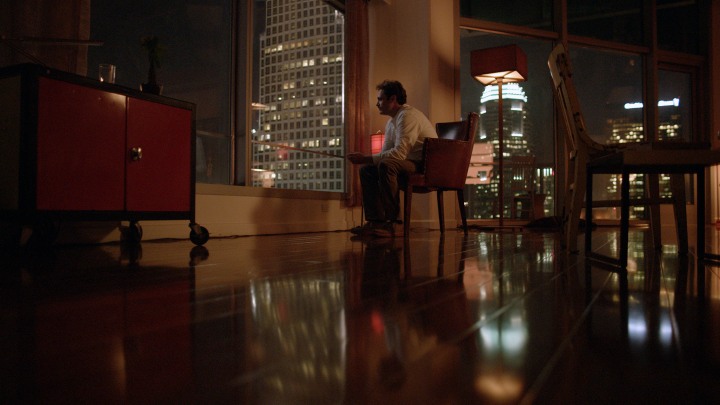
Since this film revolves around a love story where only one person is shown on screen, the film needs to be very cinematic to help portray a feeling of love, intimacy, and a strong characterization of Theodore. In which we see done through the long soft close-up shots on Theodore as he talks to Samantha. We feel that love through Theodore. The soft glow of dawn and the city lights in the background sets up the feeling of tenderness and love. We don’t feel a loneliness. Instead we feel happiness for Theodore, because of the cinematography of Theodore’s expression the audience is given a strong passionate feeling of love.
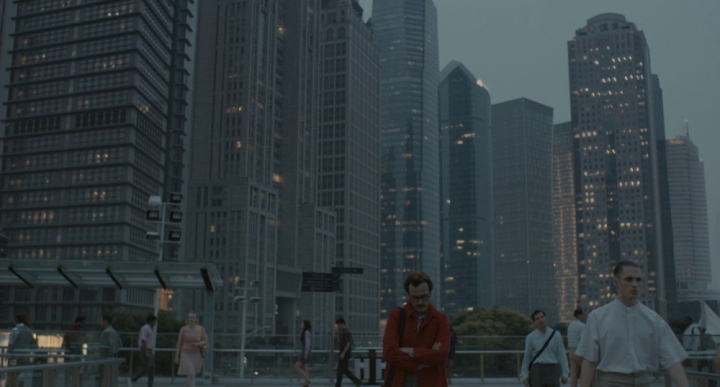
Now, looking at the color tones in this film we can recognize that they are noticeably thematic, meaningful, and a sort of pathetic fallacy. Although this film is very soft and soulful, there is a distinct hue of red incorporated into every scene. In majority of the scenes there is either a bluish toned or a tan/whitish toned background, giving off a soft pure effect. However, we are then given this intense red that stands out profusely. A lot of the time the red comes from Theodore and the clothes he wears, as a lot of the other characters wear very dull colors, like tan, white, and brown. This red portrays the personality and feelings of Theodore. We see that he is different than everyone else, lonely and depressed. When he meets Samantha, he starts to become happy again, and at the end of their relationship he is changed and refreshed, realizing that he can find happiness again. In which, we recognize through the change of the red color tones throughout the duration of the film. In the beginning of the film there is a lot of intense additions of red surrounded by soft dull hues, but over time we start to notice that the intense color of red fades away, and we are left with more complete whitish-bluish tones at the end of the film. Signifying purification and a revival of Theodore. Through the cinematography color choice and changes we are portrayed, the emotions and ambience helps characterize Theodore, in which creates more of an intimate and personal connection to him. We start to sympathize for Theodore and feel that he does not deserve to be in the melancholy state that he is in. Which we would not have felt as intensely if it was not through these tonal cinematic choices.
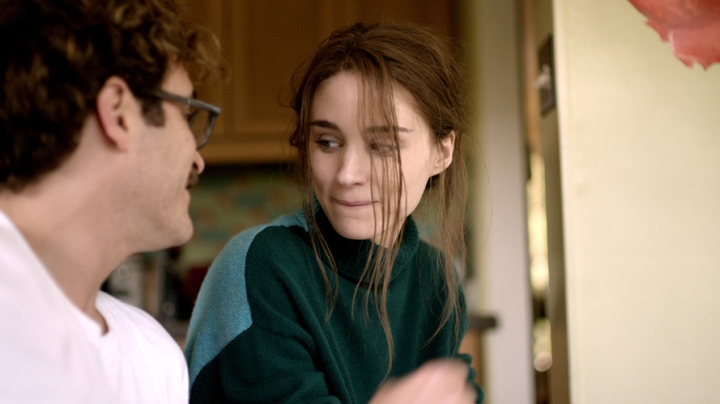
Moreover, Her also uses montages, more specifically the Kuleshov Effect to display and intensify what is going on in Theodore’s head. All the montages in this film flip back and forth from him lonely in bad, to reminiscing on the good time with his ex-wife. In a dark bluish toned room where Theodore is lying down with a mopey look on his face, we cut back to brightly light scenes of him and his ex-wife laughing and we see small pure moments between the two of them. From these montages, not only do we start to understand more about Theodore, his past, and what lead him to where he is currently. We also get an understanding of Theodore desires, without him every having to explain it to us. Through the cinematography we understand what he wants, real human interaction. Even during parts of the film when Samantha and Theodore’s relationship is fairly “strong.” This technique also helps us start to see the disconnection between Theodore’s wants and needs, which reflects his loneliness and isolation from the world around him.
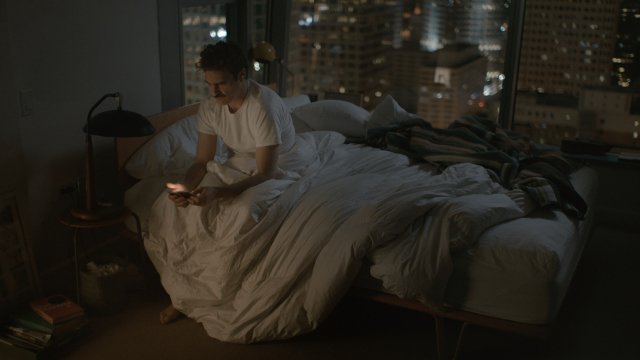
Talking about loneliness and isolation, we experience a lot of that through a shallow depth of field. In nearly every shot of Theodore with the skyline of the city behind him, we see that his is in focus and the city is very out of focus. This tactic makes the audience feel that disconnect Theodore has from his world, in which we’ve established is the thing he needs to connect with. We can learn a lot about a character from their surroundings, however, we don’t get that with Theodore a lot of the time. We instead feel with Theodore that isolation and disconnect he is feeling, because we are totally focused in on Theodore. We don’t notice a relationship between the two, because we are rarely given any. There are only a select few scenes that have both Theodore and the city in focus, such as the scene of him on the train, and after Theodore first installs Samantha. This signifies Theodore’s connection with the world around him, and the distinction between his desires and needs. As the film progresses and a lot of the shots move from a majority of shallow depth of fields to a deep depth of fields it starts to feel bittersweet as we see Theodore’s connection with the world around him. This is also very effective, because it captivates the audience, and we subtly but very effectively start to invest ourselves and connect to Theodore, visibly seeing that change in Theodore and his connection to the world again.
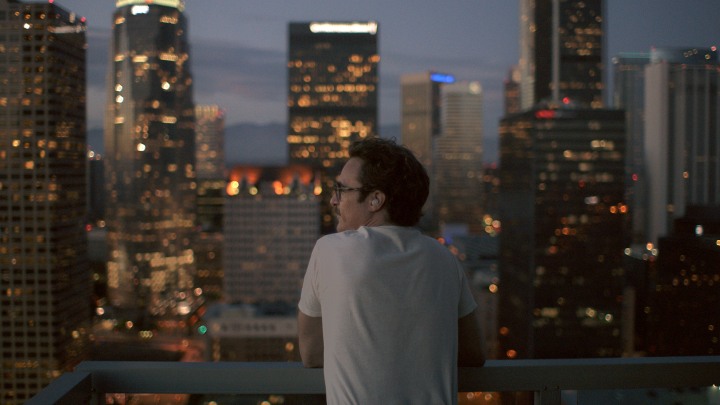
All in all, Hoytema is a Dutch Swedish cinematographer that has started to make his big break in America recently, the film Her being one of his, if not his, best work so far. Hoytema’s ability to jump on any project without limitations of only knowing how to shoot on digital or film gives Hoytema more room to truly captivate what he wants with each scene, making Hoytema a truly amazing cinematographer because of that. The reason Hoytema is my favorite cinematographer is because of the movie Her. It is my favorite movie and I think the cinematography made the film extremely effective, and truly captivate the characterization of Theodore, making you feel for Theodore without him even having to say a word. Through the cinematography alone you feel unjust and sympathetic for Theodore, and I think cinematography that can do that is truly breathtaking and admirable.



When selecting a random film to view often one of my qualifiers is tone. Looking through screen caps, the softness or harshness of the colors can sometimes convey more of the film’s meaning than a direct plot synopsis.
LikeLike